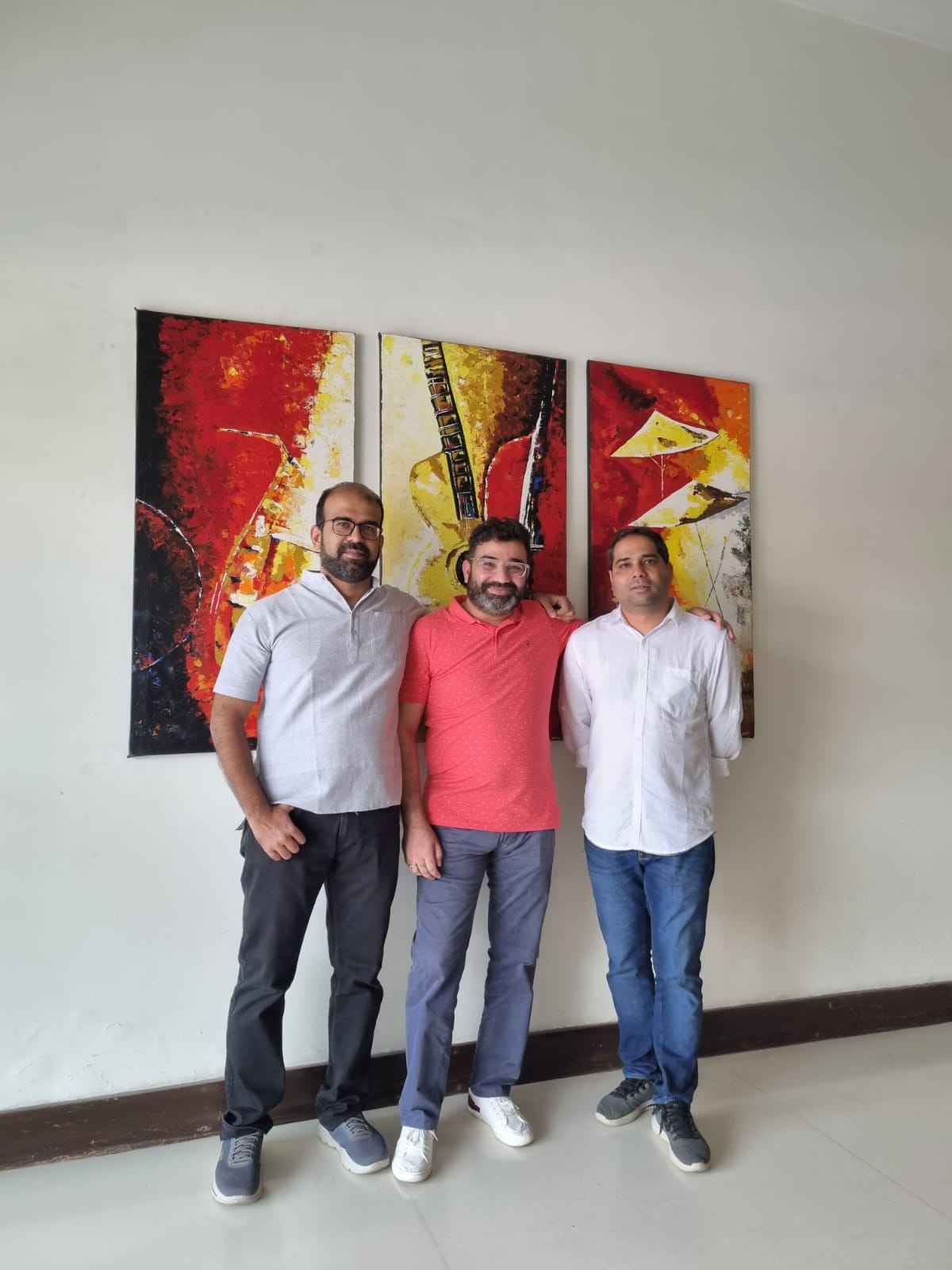Two IITian storytellers from Mumbai have created Sutradar, to bring to young children the rich tapestry of Indian stories. With smartphones being the windows to the world to the current generation Gaurav Tiwari and and Satish Meena embarked on a unique journey in 2020 to bring the timeless tales of gods, goddesses, and epic adventures into the digital age.
Inspired by the age-old stories that had been passed down through generations, they envisioned a way to make these myths not only accessible but also interactive in the palm of your hand.
Armed with a deep love for their cultural heritage and a curiosity for the capabilities of technology, these modern-day bards set out to weave the threads of mythology into the digital fabric of smartphones. Their mission to create a platform where users could not only read or listen to ancient stories told through short captivating videos.
As they delved into the vast treasure trove of Indian mythology, they discovered a wealth of characters, each with their own tales of valor, love, and wisdom. The stories by themselves are eternally enchanting but there are no longer extended family to tell them, and no programmes in India that could compare to the films made in the West.
With a blend of creativity and technological prowess, the Gaurav and Satish began to craft an immersive experience that transcended the boundaries of time. A new chapter in the saga of Indian mythology has unfolded—one written not in ink on parchment, but in pixels on smartphones. The journey had just begun, and the storytellers are determined to weave a tapestry that honorsthe past while embracing the future.
In this interview Gaurav talks about the journey of Sutradar and its role in preserving our stories.
Do you think the reason behind less familiarity with Indian stories and IP is because of the lag in adapting these to present day media (such as apps, Instagram reels, etc)? Did the pandemic make this inadequacy more evident?
Not only in Instagram reels but also in other modern day media, Indian stories have not been explored much even in traditional media like TV and Cinema. Whatever efforts have been made in the past in this direction have been limited to one story, one medium, rather than making an organized effort into creating a self-sustaining ecosystem around them.
Pandemic pushed people indoors and made them more heavily dependent on screens and that certainly exposed the lack of content based on Indian culture in modern media channels as well.
What are your plans to expand into video games with Indian roots? Is there a larger market for those games in urban audiences than physical board games?
Video games require significant commitment in terms of time and money. While we have shortlisted some storylines for potential video game adaptations, we will wait for the right opportunity to delve into them. There might be a larger market for video/mobile games than board games in terms of reach, however the opportunity to make money is very limited. Only real money games like online gambling and fantasy sports are running sustainable business, others are struggling.
However we believe that this situation will change in the future and we will be prepared for it when that happens considering we would be ready with a lot of ready assets to be used in these games.
What role does monetisation of a country or culture's IP play in soft power?
Very significant. We believe true soft power means the other side acknowledges, understands and appreciates your culture. This can only be done through powerful stories. We do not lack stories. What we lack is a significant effort in creating and promoting high quality content and products around them. My kids are excited about Christmas or Halloween because they have consumed entertaining content around these festivals. This becomes the initiation point for them to look towards western culture. We need to create content and design activities around our festivals to engage the younger generation.
Are there plans to expand your storytelling to include stories and legends of tribal communities and keep alive stories only told in specific regions of India?
We do want to tell the stories from all across the country. For us the purpose of this is two-fold. One, it expands the scope and reach and secondly, it also helps create awareness about various cultures and brings a sense of unity in diversity. A very fine example of this is the recent success of the Kannada film Kantara. A movie based on the cultural tradition of a very specific part of the country which resonated with almost the entire nation.
How does one go about in these modern times making the stories of the epic accessible and relevant in terms of language and content? Does this run the risk of being unfaithful to the original or taking liberties with ancient traditions?
When we were young, the device we used to consume content was called an "idiot box", nowadays they are "smart tv" or "smart phone". This means the style of storytelling that worked for idiot box will not work for smart TVs/phones. Our stories have seen this evolution across every generation without distorting the story or changing the message – the printing press era gave us the Gita Press, the comic book era was dominated by Amar Chitra Katha, the audio cassette era saw the rise of T-series and Sagar Arts gave us the most successful show of the TV era - based on the Ramayana. We are trying to do the same for the Smart Device era.
As long as we research well and take our role seriously with our heart in the right place we should be able to do justice to the original stories while adopting them for the modern mediums.

Do you intend to broaden the target audience into a more global one? What changes would you implement in that case and how would positive global reviews impact the popularity in the Indian market?
We do. This again goes back to your question about soft power. We can achieve global soft power in the true sense only by taking these stories global. The Internet has made taking these stories global easier than it was a decade ago and even the creation/adoption process will become easier with the advancement in generative AI. We need to use modern tools to create and distribute stories to the modern audience. Unfortunately despite many decades after independence we still seek global validation for most of the things we do. Keeping that in mind positive global reviews will certainly help in gaining popularity in the Indian market as well.
I grew up in Kanpur, which is famous for its leather goods. I once bought an expensive pair of shoes of a popular foreign brand only to later discover that they were manufactured in Kanpur. We don't appreciate what is easily accessible to us and do not want to spend money on it. Unfortunate but true.
Over thousands of years, many versions of the Indian epics and stories have diverged from the original and been retold. Is there such a thing as a right or wrong version, and how do you approach this issue in your series Myth Busters?
I usually avoid this debate considering there is no way to establish authenticity with certainty. However careful and repeated reading of multiple versions gives us an idea and you become adept at spotting inconsistencies. The approach we have adopted at Sutradhar is to refer to unabridged versions of the text available through reputed publications before starting the process of developing the story.
Regarding myths, I categorize them under two categories - harmful and harmless. A harmful myth is one which is carefully created as propagated with the intent to distort the original messaging and put our ancient culture in bad light. An example of this would be the myth created around Eklavya that he was denied education because of his low caste.
An example of a harmless myth would be the myth that Shrikrishna gave Akshaya Patra to Yudhishthira. While it is not true, in reality it was Suryadeva, however this myth does not distort the messaging of the epic or put it in a wrong light.
We are more aggressive towards busting the harmful myths.
With a great oral tradition should we look at creating content not just from our great texts but also through wisdom transferred orally? Are you doing this?
We intend to do that when we reach a more mature stage as an organization. However we have explored this at a minuscule scale for our Temple Tales series considering the stories around many temples are based on oral traditions or "Sthal puranas".





